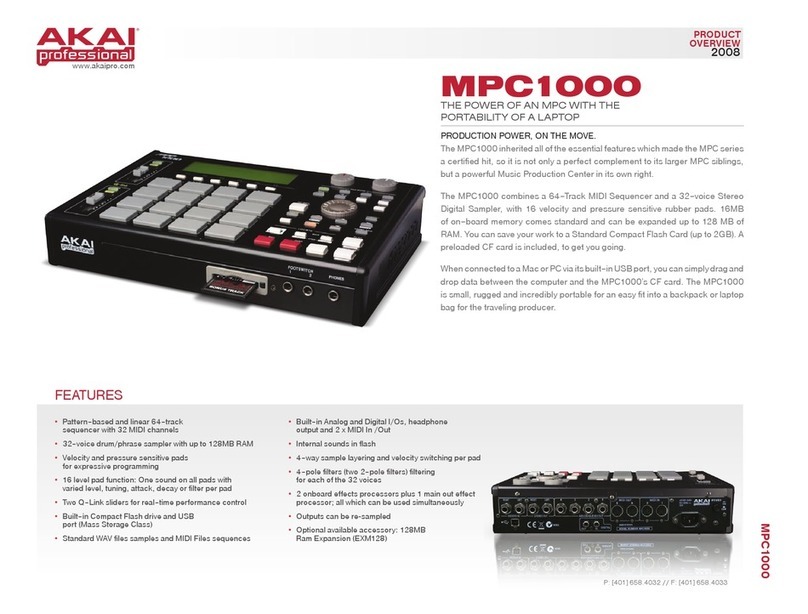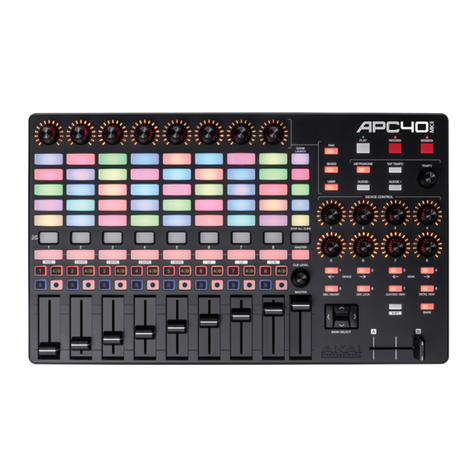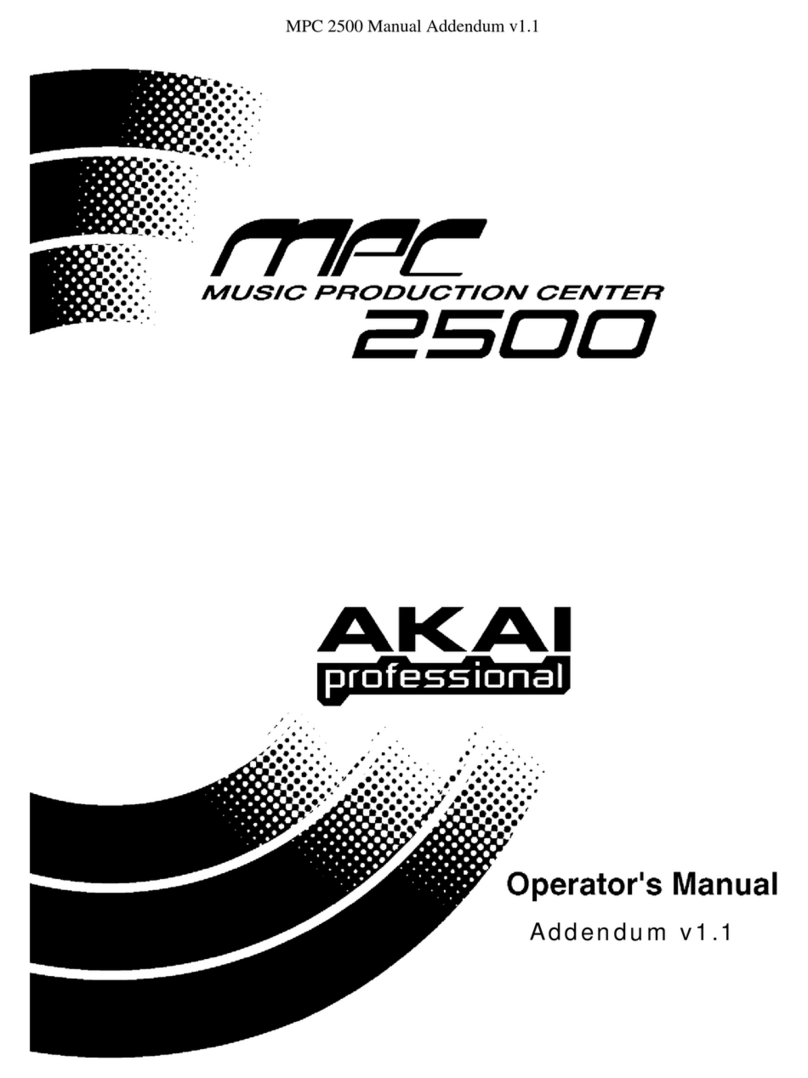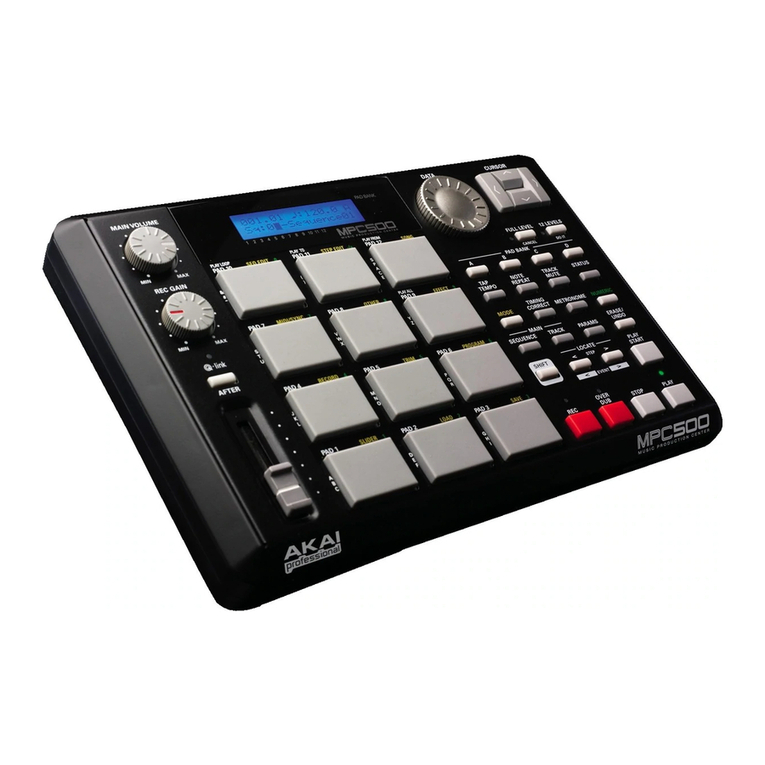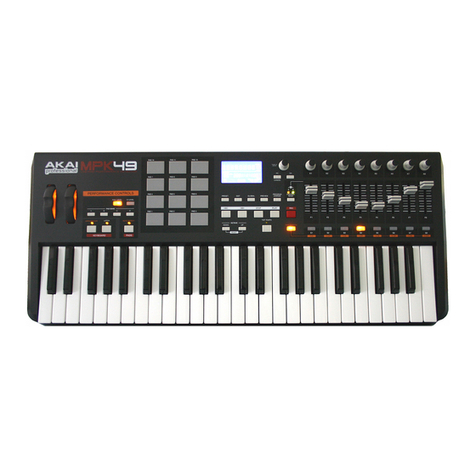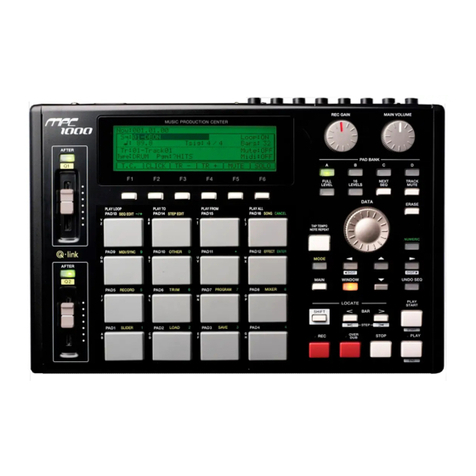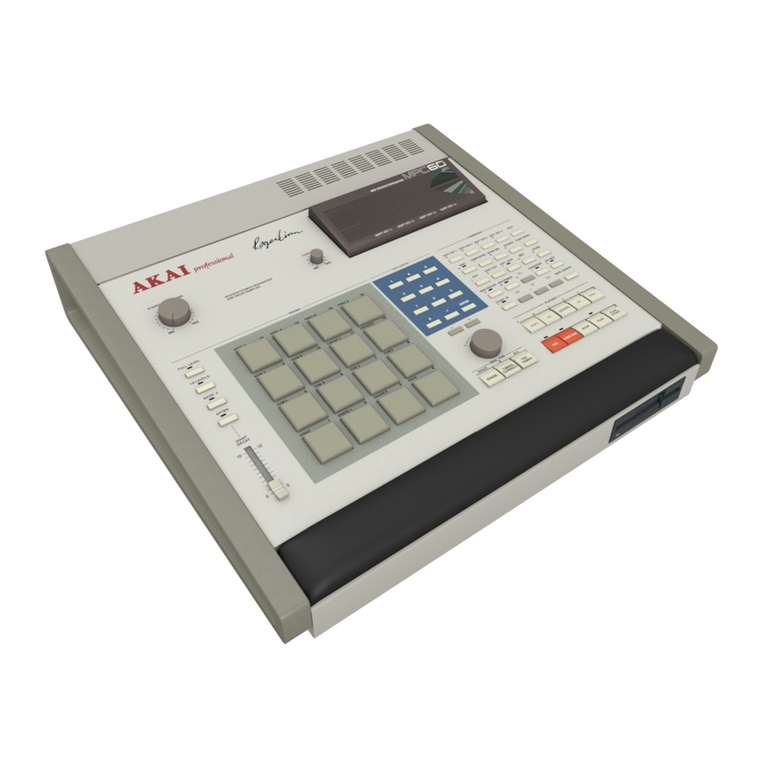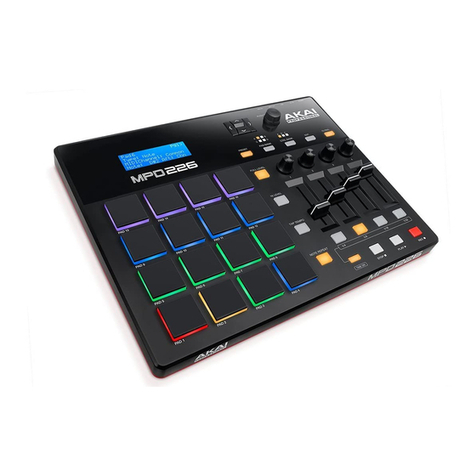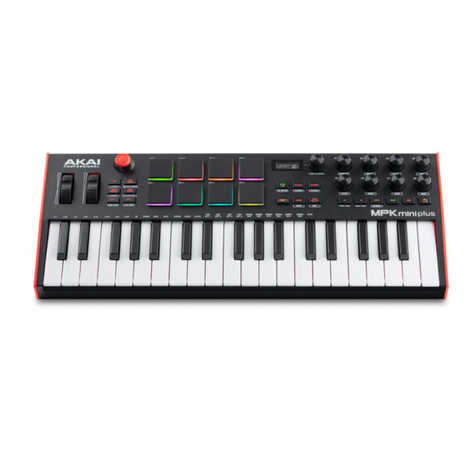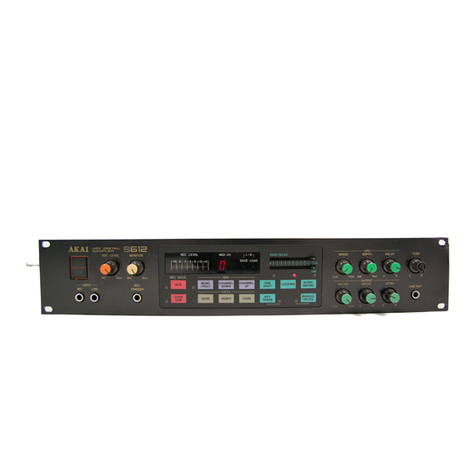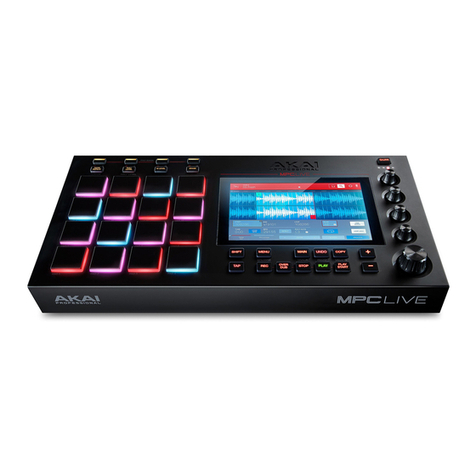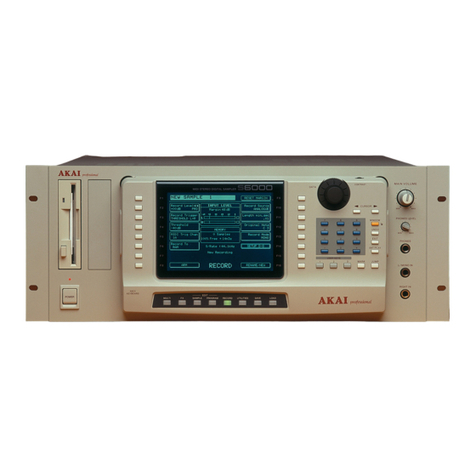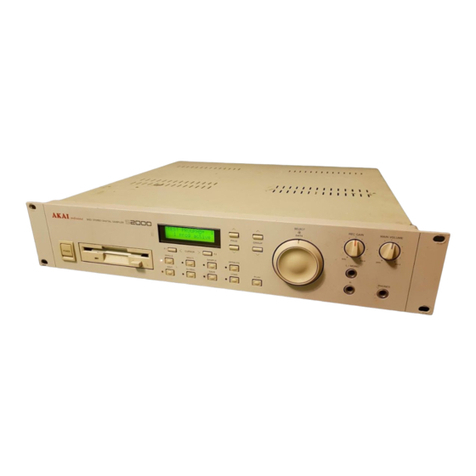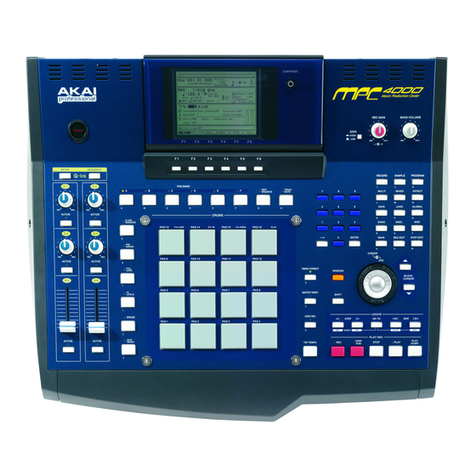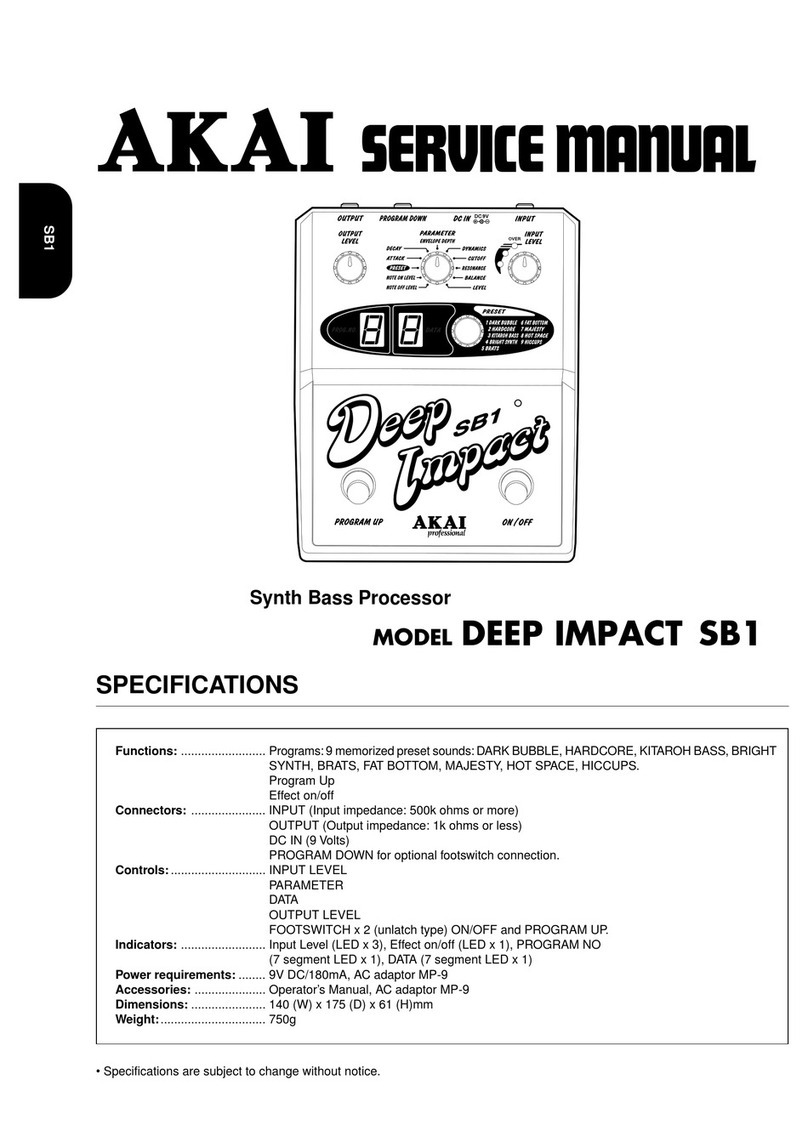
Introduction
WARRANTY
AKAI Electric Co. Ltd warrants its products, when purchased from an authorized AKAI dealer, to be free from
defects in materials and workmanship for a period of 12 (twelve) months from the date of purchase. Warranty
service is effective and available to the original purchaser only, and only on completion and return of the AKAI
Warranty Registration Card within 14 days of purchase.
War: nary coverage is valid for factory-authorized updates to AKAI instruments and their software, when
their installation is performed by an authorized AKAI Service Center, and a properly completed Warranty
Registration has been returned to the factory.
To obtain service under this warranty, the product must, on discovery of the defect, be properly packed and
skipped to the nearest AKAI Service Center. The party requesting warranty service moat provide proof of original
ownership sad date of purchase of the product.
If the warranty is valid, AKAI will, without charge for parts or, labor, either repair or replace the defective
part(a). Without a valid warranty, the entire coat of the repair (parts and labor) is the responsibility of
the product's owner.
AKAI warrants that it will make all necessary adjustments, repairs and replacements at no coat to the original
owner within 12 (twelve) months of the purchase date if:
1 The product fails to perform its specified functions due to failure of one or more of its components.
2 The product fails to perform its specified functions due to defects in workmanship.
3 The product has been maintained and operated by the owner in strict accordance with the written instructions
for proper maintenance and use as specified in this Operator's Manual.
Before purchase and use, owners should determine the suitability of the product for their intended use, and the
owner assumes all risk and liability whatsoever in connection therewith. AKAI shall not be liable for any injury,
loss or damage, direct or consequential, arising out of the use, or inability to use the product.
The warranty provides only those benefits specified, and does not cover defects or repairs needed as a result of acts
beyond the control of AICAI, including, but not limited to:
1 Damage caused by abuse, accident or negligence. AKAI will not cover under warranty any original factory
disk damaged or destroyed as a result of the owner's mishandling.
2 Damage caused by any tampering, alteration or modification of the product: operating software, mechanical or
electronic components.
3 Damage caused by failure to maintain sad operate the product is strict accordance with the written instructions
for proper maintenance sad use as specified in this Operator's Manual.
4 Damage caused by repairs or attempted repairs by unauthorized persona.
5 Damage caused by fire, smoke, falling objects, water or other liquids, or natural events such as rain, floods,
earthquakes, lightning, tornadoes, storms, etc.
6 Damage caused by operation on improper voltages.
IMPORTANT NOTE: This warranty becomes void if the product or its software is electronically modified, altered
or tampered with is any way.
AKAI shall not be liable for coats involved is packing or preparing the product for shipping, with regard to time,
labor or materials, shipping or freight coats, or time sad expenses involved in transporting the product to and from
an AKAI Authorized Service Center or Authorized Dealer.
AKAI will not cover under warranty an apparent malfunction that is determined to be user error, or the owner's
inability to use the product.
THE DURATION OF ANY OTHER WARRANTIES, WHETHER IMPLIED OR EXPRESS, INCLUDING BUT
NOT LIMITED TO THE IMPLIED CONDITION OF MERCHANTABILITY, IS LIMITED TO THE
DURATION OF THE EXPRESS WARRANTY HEREIN.
ARAI hereby excludes incidental or consequential damages, including but not limited to:
1 Loss of time
2 Inconvenience
3 Delay in performance of the Warranty
4 The lose of use of the product
5 Commercial lose
6 Breach of any express or implied warranty, including the Implied Warranty of Merchantability, applicable to
this product
Version 20 89/11
a
e 2
